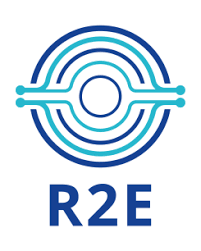Americium-Beryllium Source
Neutrons are generated by the beryllium after the absorption of an alpha particle emitted from the americium, with activity of 888 GBq. The source is composed by a cylindrical capsule containing the two elements, which is housed below the floor. It can be easily turned on/off in a few seconds and once activated is maintained in the middle of the irradiation room inside an aluminium pipe, by means of compressed air. This aspect allows an isotropic flux of 5.03×107 [s-1/4π].
CHARM
The CERN Highly-Accelerated Mixed Field Facility (CHARM) at CERN is a facility for testing radiation effects on electronics like no others. The proton beam is obtained in spills with an intensity of approximately 5×1011 protons and a duration of around 350 ms from the Proton Synchrotron (PS) of the CERN accelerator complex and has a momentum of 24 GeV/c. The spill is repeated around three times during a super-cycle of 45 seconds.
CLEAR
The CERN Linear Electron Accelerator for Research (CLEAR) is an accelerator running R&D for the future CLIC machine. CLEAR is a LINAC beamline that can accelerate electrons up to very high energies (55-220 MeV). There are currently two test stations capable of hosting radiation effects on electronics studies. The first is the Very energetic Electron facility for Space Planetary Exploration missions in harsh Radiative environments (VESPER). The second is the TeraHertz (THz) test station. Both test stations make use of the same LINAC structure to accelerate electrons and they are in the same irradiation hall, just on separate beamlines.
